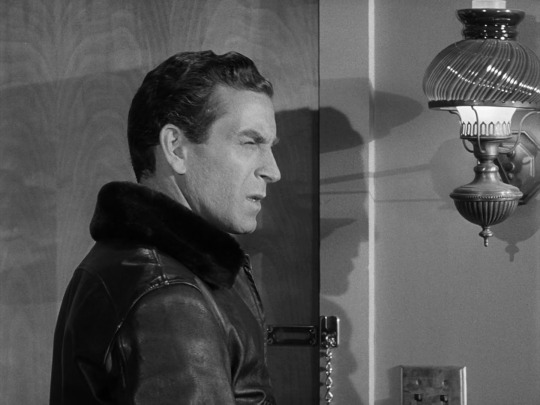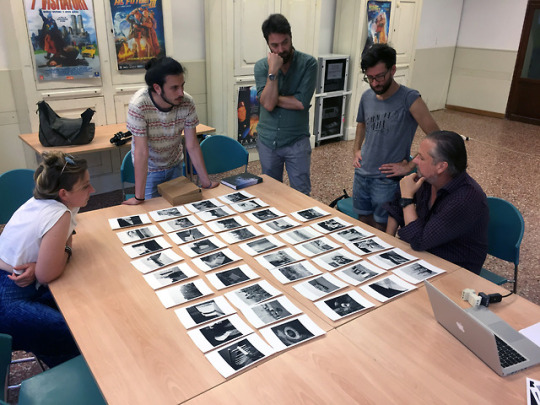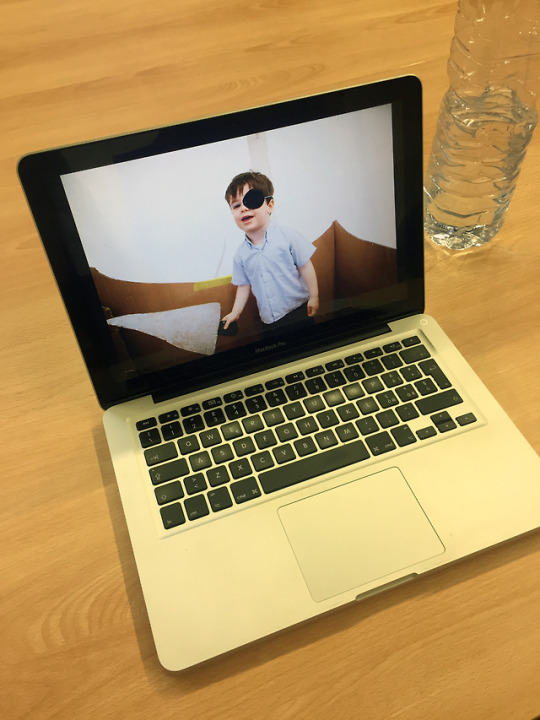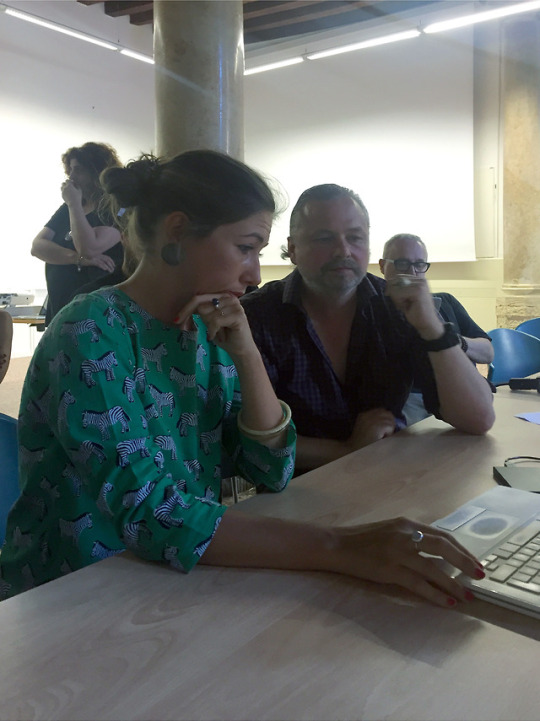#fred mandl
Photo










5.35 The Fear
Director: Ted Post
Director of Photography: Fred Mandl
“Fear, of course, is extremely relative. It depends on who can look down and who must look up. It depends on other vagaries like the time, the mood, the darkness. But it's been said before with great validity that the worst thing there is to fear is fear itself.”
✨Support✨
#Twilight Zone#the twilight zone#season 5#the fear#hazel court#Ted Post#fred mandl#Rod Serling#peter mark richman#1960s#the sixties#Classic TV#classic television#Classic Horror#Classic Science Fiction#speculative fiction#scifi#science fiction#Aliens#horror#television#cinematography#close up#close-up
17 notes
·
View notes
Text
Bom dia!
Por: Fred Borges
Faça parte do Clube de Leitura e receba artigos e capítulos do lançamento da minha autobiografia!
Contribuições mensais até dia 20 de cada mês.
CPF/ PIX: 42297729553
Banco: Itaú 341
Agência: 3888
CC: 22197-9
Frederico Vianna Borges
Anotações: Clube de Leitura.
Observação: Enviar comprovante simultaneamente para: 55.71.984010101 e [email protected]
Estrela na arte e na ciência.
Pouca gente conhece hoje em dia esta face.
Principalmente que ela foi considerada a mulher mais linda e inteligentes do mundo em sua época!
Não só pelo trabalho como atriz, mas como cientista.
Numa época em que o machismo imperava, ela fugiu de um casamento torturante, se diria hoje: relacionamento tóxico,que represava a e abafava seus talentos como artista e cientista.Mulher inteligente, culta e linda, algo insuportável para muitos homens de nossa
contemporaneidade.
O sistema de comunicações que Lamarr criou para as Forças Armadas dos Estados Unidos atualmente acelera as comunicações de satélite ao redor do mundo e foi usado para criar a telefonia celular.
No jogo de computador Half-Life 2, o Dr. Isaac Kleiner possui um headcrab de estimação chamado Lamarr, em homenagem à atriz.
Em 1998, uma ilustração da face de Lamarr foi usada pela Corel Corporation, em sua publicidade do CorelDRAW 8 software, sem autorização.
O caso foi resolvido em 1999.
Em 2005, o dia do seu nascimento, 9 de novembro, foi instituído na Alemanha como o Dia do inventor, em sua honra.
O seu nome: Hedy Lamarr
Nascida na capital da Áustria-Hungria, Viena, Hedy começou sua carreira de atriz em vários filmes alemães, austríacos e tchecos, inclusive o controverso filme Ecstasy (1933). Em 1937, ela fugiu de seu marido, o fabricante de armas austríaco, Friedrich Mandl, mudando-se para Paris e depois se refugiando em Londres.
Lá ela conheceu Louis B. Mayer, diretor dos estúdios da Metro-Goldwyn-Mayer (MGM) e lhe ofereceu um contrato em Hollywood, onde ela logo foi promovida como sendo a "mulher mais bonita do mundo".
O interesse na atuação veio desde cedo, quando Hedy, ainda criança, assistia a peças de teatro e a filmes.
Estudou balé e piano até os 10 anos e aos 12 anos, ganhou um concurso de beleza em Viena.
Hedy era muito ligada ao pai, com quem tinha conversas sobre política, ciência, tecnologia e ele foi uma grande inspiração para sua futura invenção.
Num dos seus primeiros trabalhos artísticos, já provocava polêmica e foi proibido nos EUA, o filme:Ecstasy
No começo de 1933, aos 18 anos, Hedy recebeu o papel principal no filme de Gustav Machatý, o longa Ecstasy, onde ela interpreta uma mulher negligenciada pelo marido mais velho e pouco afetuoso.
O filme se tornou lendário e polêmico por mostrar o rosto da atriz encenando um orgasmo, além de algumas cenas de nudes e closes de partes de seu corpo.
Quando se interessou pelo papel, Hedy entendia pouco sobre filmagens e, ansiosa pelo trabalho, assinou o contrato sem ler o roteiro.
Hedy Lamarr foi, em outras fases de sua vida e da sua história pessoal e História mundial, uma cientista e durante a Segunda Guerra Mundial ela inventou, em parceria com George Anthiel, um aparelho de interferência em rádio para despistar os radares nazistas, isto porque Hady, ao realizar um dueto com George, tocando piano, percebeu que se o emissor e o receptor mudassem constantemente de frequência, os dois poderiam se comunicar sem medo de serem interceptados.
No entanto, sua invenção foi rejeitada pelo Conselho Nacional de Inventores por conta do machismo, o que levou ao fracasso dos torpedos americanos por conta de sua imprecisão.
Quantas vidas foram perdidas pela ignorância de um sistema opressor não só de mulheres, como ela, mas com negros, índios, judeus, e todas minorias perseguidas, com limitações de várias formas,onde imperava o preconceito e a ignorância!
Ignorância como a do presidente Lula da Silva que chamou recentemente toda uma população de " de parafuso a menos"!
Melhor ter "um parafuso a menos", o que nunca será o caso tanto socialmente, quanto cientificamente, do que ser desonesto e corrupto em termos morais!
Mas voltando a falar de gente que faz e é um exemplo a humanidade, Hedy Lamarr era considerada um prodígio para sua época e até os nossos dias!
Sua invenção só passou a ser utilizada oficialmente em 1962 na Crise dos Mísseis e ficou conhecida somente em 1997 quando a Electronic Frontier Foundation premiou a cientista por sua contribuição para a ciência. E, logo no ano seguinte, a Ottawwa Wireless Technology adquiriu parte de sua patente e a partir da ideia inicial de Hady diversas tecnologias de comunicação foram criadas, como as conexões Wi-fi e CDMA (Acesso Múltiplo por Divisão de Código)e é por esse motivo que a cientista é conhecida como a “mãe do telefone celular” ou “mãe do Wi-fi”.
Quem desfruta da conectividade que reconfigurou o mundo pode se surpreender ao ser informado que uma atriz hollywoodiana é uma das personagens que contribuíram para esse feito.
A inventora e atriz austríaca Hedwig Eva Maria Kiesler (1914-2000).
Prêmios em vida e póstumos para a humanidade:
Electronic Frontier Foundation concedeu a ela e a Antheil o Prêmio Pioneer (o Oscar dos inventores).
Lamarr também se tornou a primeira mulher a receber o Prêmio Espírito de Realização Bulbie Gnass da Convenção de Invenção.
Embora ela tenha morrido em 2000, Lamarr foi incluída no Hall da Fama da National Inventors para o desenvolvimento de sua tecnologia de salto de frequência em 2014.
Fontes:
Hedy Lamarr. In: WIKIPÉDIA: a enciclopédia livre. Disponível em: <https://pt.wikipedia.org/wiki/Hedy_Lamarr>. Acesso em: 20 Abril 2023.
CANAL MAKER. Hedy Lamarr: a mãe do Wi-Fi | Fazedoras. Disponível em: <https://www.youtube.com/watch?v=vmu47PCYIhk>. Acesso em: 21 Abril 2023.
Canal Tech. Mulheres Históricas: Hedy Lamarr, a atriz que inventou a base para o Wi-Fi. Disponível em:<https://canaltech.com.br/internet/mulheres-historicas-hedy-lamarr-a-atriz-que-inventou-a-base-para-o-wi-fi-77347/>. Acesso em: 23 Abril 2023.
National Women’s History Museum. Hedy Lamarr. Disponível em: <https://www.womenshistory.org/education-resources/biographies/hedy-lamarr>. Acesso em: 22 Abril 2023
0 notes
Photo

Landscape Stories Workshop | Fred Hüning | PORTRAITS
Elisabeth Mandl | Protest, elegance, mascara - an intimate portrait of Ben
© courtesy of Elisabeth Mandl
2 notes
·
View notes
Text
Your most urgent questions about the new coronavirus
Scientists are racing to unravel the mysteries of a new coronavirus that recently emerged in China. The outbreak is now a global public health emergency, the World Health Organization said on January 30. The virus has infected nearly 8,000 people globally, killing at least 170, all in China. Its rapid spread has sparked global concern. It also is triggering many questions from researchers and the public alike. In this rapidly evolving epidemic, many unknowns remain.
Explainer: What is a coronavirus?
Here’s what we know so far about what’s known as 2019 novel coronavirus, or 2019-nCoV. We will update these answers as more information becomes available.
Do you have questions about the new coronavirus that you’d like answered? E-mail them to [email protected].
What is 2019-nCoV?
Coronaviruses are one of a variety of viruses that typically cause colds. But three members of this viral family have caused more severe outbreaks that include pneumonia (a type of inflammatory lung disease) and risk of death. The first was severe acute respiratory syndrome, or SARS. Then came Middle East respiratory syndrome, or MERS. Now there is 2019-nCoV. This latest coronavirus first emerged in Wuhan, China.
When did the outbreak start?
Chinese officials notified the World Health Organization on December 31, 2019 of an unknown pneumonia-like disease in 44 patients. Initial reports tied this disease to a seafood market in Wuhan, a city in central China’s Hubei Province.
But the earliest cases may not be related to exposure at the market. That’s what a team of Chinese researchers reported January 24 in The Lancet. The earliest known patient got sick December 1. He had not been exposed to the market, according to the study, although the first person who died had been.
So far, versions of the new virus isolated from patients in China and other countries are very quite similar. “This lack of diversity fits with an origin in the human population in mid-November,” says Trevor Bedford. He’s an evolutionary biologist at the Fred Hutchinson Cancer Research Center and the University of Washington. Both are in Seattle, Wash.
“The market was not the [source of the] index case. It was an amplifier,” said Anthony Fauci. “People crowded in the market infected each other.” Fauci directs the National Institute of Allergy and Infectious Diseases in Bethesda, Md. He was speaking at a Biothreats meeting in Arlington, Va., that was sponsored by the American Society for Microbiology.
Where did the virus come from?
Coronaviruses originate in wild animals. Sometimes they leap to humans.
Bats often carry coronaviruses. However, in most cases they don’t pass these viruses directly to people. SARS probably first jumped from bats into raccoon dogs or palm civets. People got sick only after making contact with those other animals. All the pieces necessary to re-create SARS are still circulating among bats, although that virus has not been seen in people since 2004.
Explainer: Animals’ role in human disease
MERS went from bats to camels before leaping to people. A paper published January 22 in the Journal of Medical Virology suggests that the new coronavirus has components from bat coronaviruses, but that snakes may have passed the virus to people. But many virologists are skeptical that snakes are behind the outbreak.
Current data suggest that the virus made the leap from animals to humans just once and that since then it has been moving between people. Based on how closely related the viruses are that have been isolated from patients, Bedford says, animals from the seafood market probably didn’t give people the virus multiple times (as researchers once thought). If the virus leaped from animals to people many times, the researchers would expect there to be more genetic changes among them. Bedford and colleagues updated their conclusions and supporting data January 29 at nextstrain.org.
Can it infect pets?
There are currently no reports of pets getting sick with 2019-nCoV.
Several types of coronaviruses can infect animals. In some cases it can make them ill. So the U.S. Centers for Disease Control and Prevention, or CDC, advises avoiding contact with pets and wearing a face mask if you are sick. In 2003, researchers reported in Nature that cats could be infected with the SARS virus. Those cats could then spread the virus to other cats in the same cage. But the cats didn’t show symptoms. Ferrets, too, could get and share the virus. One difference: The ferrets became sick.
While the CDC recommends that people traveling to China avoid animals, the agency says there is no reason to believe that animals or pets in the United States can transmit the virus.
What are the symptoms of a 2019-nCoV infection?
People sickened by the new virus may develop a fever, cough and difficulty breathing, according to the CDC. These symptoms are similar to SARS, researchers report January 24 in The Lancet. Though many people with 2019-nCoV might experience mild symptoms, others can develop pneumonia.
Based on how MERS works, the CDC reports that symptoms of 2019-nCoV may appear from two to 14 days after exposure. On average, it may take someone five days to become visibly sick, researchers reported January 29 in the New England Journal of Medicine. That number, however, is based on only 10 patients. So it needs further study, the researchers wrote.
How infectious is the virus?
Researchers don’t yet know. But since 2019-nCoV has never infected humans before last year, people have not yet developed immunity to it. So it’s likely that everyone is vulnerable to becoming infected.
How infectious a virus can be is described by what’s known as R0, or R naught. It is how many people each sick person tends to spread the virus to when a disease-causing organism hits a population where no one is immune, explains Maimuna Majumder. She’s a computational epidemiologist, someone who uses math to help track and investigate the spread of disease. She works in Massachusetts at Boston Children’s Hospital and Harvard Medical School.
Almost no virus spreads as far as its possible limits, Majumder says. “In general,” she says, “we don’t see transmission rates as high as the reproduction number would suggest.” For instance, people might wash their hands a lot. Or they might stay home to avoid getting sick. People who are sick may isolate themselves. All of these things could mean that a virus can’t reach its full potential for spread.
SARS has an R0 of 2.0 to 4.0. That means that each infected person had the potential to pass it on to two to four others. Generally, viruses with reproduction numbers greater than 1.0 may keep spreading if nothing is done to stop them. Outbreaks of viruses with an R0 that falls at or below 1.0 can eventually die out.
Explainer: What is a computer model?
Several research groups have been working to pin down an R0 estimate for the new virus based on outbreak information available to them and by harnessing different methods. Those other methods include computer models that simulate outbreaks or that make assumptions about a population’s susceptibility to the virus, potential exposure and infection rates. Others have used an approach that pulls data from current cases and allows the researchers to describe what is happening in real time.
Current estimates vary, and some have already been revised. Majumder and her Harvard colleague Kenneth Mandl estimate the R0 for 2019-nCoV falls between 2.0 and 3.1. Meanwhile, Jonathan Read of Lancaster University in England and colleagues reported a R0 value on January 28 of 3.11 (with a range from 2.39 to 4.13) on medRxiv.org. But Christian Althaus and Julien Riou, both of the University of Bern in Switzerland, posted data to an online database and bioRxiv.org on January 24 that supports their calculation that the R0 is about 2.2 (with a range between 1.4 and 3.8).
Clearly, R0 is a tricky number to pin down, at least in an infection’s early days. It also can change as control measures are put in place. This suggests that as more cases emerge, these estimates will likely continue to shift. But currently the R0 appears to be similar to that for SARS.
How long does it stay on surfaces?
Researchers aren’t sure, but not very long. Or that’s what they expect, based on what they know about other coronaviruses. These viruses typically survive on a surface for only a few hours, notes Nancy Messonnier. She directs the CDC’s National Center for Immunization and Respiratory Disease in Atlanta, Ga. She spoke in a news conference on January 27.
While it’s still unclear how the new virus spreads, coronaviruses in general are thought to be spread primarily by respiratory droplets. These are spread when patients cough, for instance. There is no evidence suggesting 2019-nCoV can be transmitted from things such as imported goods, according to the CDC.
How does it spread?
The new virus is spreading from person to person. Like SARS and MERS, it probably spreads between people similarly to other respiratory diseases, the CDC says. Respiratory droplets from an infected person’s cough or sneeze can carry virus to someone new.
Some coronaviruses can cause the common cold. Severe coronaviruses infect deeper parts of the respiratory tract than cold viruses do. So infected people are not usually contagious until they start to show symptoms, says Stanley Perlman. He’s a virologist at the University of Iowa in Iowa City.
By the numbers: How infectious measles and other diseases spread
In previous outbreaks, “if somebody was going to get infected from [an] infected person, the virus had to get up into the upper airway so it could spread,” Perlman says. It wouldn’t spead until someone was sick enough to start coughing.
Unlike SARS and MERS, however, there have been some reports of people without symptoms spreading 2019-nCoV. That’s what Chinese officials announced on January 26. And because people might be infected and not show obvious symptoms, doctors should isolate patients and trace their contacts as soon as possible, researchers reported January 24 in The Lancet.
Although people showing no symptoms can spread viruses such as those that cause influenza or measles, that would be new for the types of coronaviruses that cause epidemics, Perlman says.
And if that proved true, it could make the outbreak harder to control. For instance, with no signs that people are sick, airport screenings would be less useful. The good news: Symptom-free people have never been the major driver of epidemics, said Fauci at a news conference on January 28.
How far has 2019-nCoV spread?
So far, it’s not clear how many people the virus has sickened. Epidemiologists — researchers who work as disease detectives — are attempting to come up with a good estimate.
Through the end of January, most of the thousands of people with confirmed diagnoses of the new virus have been in China. But several other countries — 18 as of January 30 — also reported isolated cases. Many of these patients had just returned from a trip to China.
A few countries outside China are now reporting human-to-human transmission, including Vietnam, Germany and the United States (see below, What is the situation in the United States?).
How deadly is the disease?
The coronaviruses that cause colds usually bring fairly mild symptoms. They tend to just affect the upper airways (sinuses and throat). But the new virus is more like SARS and MERS. It penetrates much deeper into the respiratory tract. 2019-nCoV is “a disease that causes more lung disease than sniffles,” says NIAID’s Fauci. It’s damage to the lungs that can make these viruses deadly.
An analysis of 99 hospitalized patients, including the first cases from Wuhan, shows that 17 developed what is known as acute respiratory distress syndrome. It’s a condition that affects the lungs and can limit the blood from getting enough oxygen. Eleven of these patients would go on to die from multiple organ failure. A team of 14 researchers in Wuhan and Shanghai, China, described the cases online January 29 in The Lancet.
The 2003 SARS outbreak killed nearly one in every 10 of the 8,000 people it sickened. MERS, a disease that still circulates in the Middle East, is more deadly. It kills about three in every 10 infected people. Right now, 2019-nCoV seems less virulent. Its death rate appears to be about four in every 100 infected people. That’s what the World Health Organization reported on January 23. But that number is may well change as more cases are diagnosed, Fauci notes.
“Almost certainly,” Fauci said at the Biothreats meeting, some people may be infected with the virus but won’t show symptoms. For now, he notes, “We don’t know at what level yet.” Right now, the outlook seems grim because health officials only know about people who are sick enough to come to the hospital. Some of those people die. Often those people who die had weak immune systems that couldn’t fight the virus. Or they mighta have had other diseases or conditions that make them more vulnerable.
More widespread screening may show exactly how many people get the virus but have mild or no symptoms. That will help researchers calculate how deadly the virus actually is.
What is the situation in the United States?
As of January 30, U.S. health officials had confirmed coronavirus in six patients. Five had recently returned from Wuhan. And one of them, a Chicago woman, later infected her husband after returning home to Chicago.
Twenty U.S. airports began actively screening travelers from China for symptoms in late January. Because of the relatively rapid release of information from China, countries like the United States have had time to put strong screening procedures in place. This may have helped them keep the virus from spreading more, says Allison McGeer. She’s an infectious disease expert at Mount Sinai Hospital in Toronto, Canada. And as someone who contracted SARS in 2003 while taking care of patients, she knows personally the dangerous side of coronaviruses.
What are the best ways to protect yourself?
There is no drug or vaccine to treat or prevent 2019-nCoV. But there are things people can do to limit the chance they will become infected. And they aren’t much different from what you’d do to keep from picking up colds or the flu, the CDC says. Wash your hands with soap and water for at least 20 seconds. (For perspective, that’s a little longer than it takes someone to sing the Happy Birthday song at a somewhat slow pace.) Other tips include covering your mouth when you cough or sneeze (or coughing or sneezing onto the floor if no handkerchief or tissue is available). Finally, don’t touch your eyes, nose or mouth. Who knows what viruses might have been on surfaces (such as stair railings or door handles) that you touched.
A couple years ago, Science News for Students staff writer Bethany Brookshire did a DIY Science experiment to test how far sneezed-out germs might go. Her data showed that germ-studded snot droplets might land 250 to 400 centimeters (8.2 to 13.1 feet) away from a sneezer. In her report, she also cited a 2016 study. It found that large snot droplets could travel 2 meters and less-viscous thin snot droplets could fly up to 8 meters (more than 26 feet). Stand clear!
youtube
To test how far sneezed-out germs might travel, Science News for Science staff scientist Bethany Brookshire put together an experiment. Here she explains how she conducted this snot science.
CREDIT: SSP/EXPLAINR
What about masks? It makes sense that they should help limit the spread of coughed or sneezed-out viruses. Certainly, McGeer says, “If you’re infected and you wear a mask, you’ll shed less virus into the air around you.” That puts less out there for others to encounter. But it’s not clear how much they’ll help healthy people, she says. Few of them seal around the nose and mouth. So that leaves plenty of room for airborne germs to be inhaled.
Tina Hesman Saey, Jonathan Lambert, Aimee Cummingham and Erin Garcia de Jesus contributed to reporting of this story.
Your most urgent questions about the new coronavirus published first on https://triviaqaweb.tumblr.com/
0 notes
Photo

🎞️ Hey Leute! 🎞️
Es tut mir leid das es schon so lange dauert, aber einen ganzen Film zu produzieren ist weitaus schwerer und zeitintensiver als ein Musikvideo zu machen oder eine kleine Doku raus zu werfen.
Es wird ja brav jede Woche am Film gewerkt, jedoch wird bei #NoBudget das Ganze doch eher zum Hobby.
Die Dreharbeiten sind abschlossen, der Schnitt mehr oder weniger auch. Jetzt fehlt noch: die Optimierung des Schnitts, Soundbearbeitung, Musik, CGI, Colorgrading.
Wann der Film fertig wird kann ich echt noch nicht sagen, da wirklich noch ein großes Stück Arbeit vor uns steht.
Wir können natürlich noch Hilfe gebrauchen.
Soundtechniker, Musiker und CGI-Leute könnten uns helfen den Film schneller fertig zu bekommen.
UND! Vielen Dank an die echt coolen Menschen die uns geholfen haben zu diesem Punkt zu kommen.
LG Aurel Hutter
Toni Steger, Rio Da, Julia Freiberger, Ricardo Scaltro, Fred Rampart, Jakob Wollinger, Herwig Ofner, Daniel Kinski, Mario Smid, Der Ääl, David Hollinetz, Roland Griffin, Stefan Buchegger, Markus Hutter, Andreas M. E. Hierzer, Andreas Peer, Tatiana Wolf, Bianca Mandoiu, InkogNicosy-mon Gärner, Jasmin Oswald, Marco Brown, Jan Hestmann, Flow Bradley, Skero Ne, Hans-Christian Haas, Stefan Lozar, Dj Zaid / Phat Deluxe, Walter Scheucher, Dani ElBuda, Bi Jaeger, Willy Meister, Viktoria Greinix, Gabriel Gschaider, VVerner Gether, Christina Mandl, Günter Ulrich, Ben Marnitz, Heinz Olbrich, Sebi Rich, Flaminia Antesberger, Daniel Zarate, Wolfram Hermann-Hubler, Perry Zmugg, Kathi Spätauf, Johannes Möseneder, Karl Kovac, Mia Hopfer,
Großes Danke auch an:
Lukas Kalthuber
Chris Burekovic K.
Sunny Makava aka Agnes F.
Wera Köhler
Alex Kiss
Deep'n'Heavy Sounds
Jassy Eastwood Body&Art
Effektarium Visual Effects & Animation
Bildkraft
Austria Video Ring
Andreas Weiss
Hc Gschier
Wolfgang Gartler
Ivo Zaricin
Sarah Satorii
Oec Toni Štajcer
Auch dabei waren:
Philipp Frisch
Mey Li
Jassy Eastwood
Screaming Bonsai
Skywatcher Studios
Emotion pixtures
Sollbruch Productions
Johannes Jeindl
Danke auch an Barbara Brunner, Bernadette Moser, Helmi Mubarak, Arnold Verderber, Constantin Kupfer, La Pipe, gallery lendnine, Andi Greinix, Rodrigez Moniika, Gerd Rumpold, Papierfabrik Kunstfreiraum, SEASONS, Niesen Berger, Max Werschitz, Tagger-Areal Graz, HDA, Kunsthaus Graz, Simon G. Mueller, Amon Huber, サンジ 黒足, Joris Narath, Rabe Abraxas, Michael Birnstingl.
0 notes
Photo










5.34 Come Wander with Me
Director: Richard Donner
Director of Photography: Fred Mandl
“Mr. Floyd Burney, a gentleman songster in search of song, is about to answer the age-old question of whether a man can be in two places at the same time. As far as his folk song is concerned, we can assure Mr. Burney he'll find everything he's looking for, although the lyrics may not be all to his liking.”
✨Support✨
#Twilight Zone#the twilight zone#season 5#come wander with me#Richard Donner#fred mandl#Rod Serling#anthony wilson#gary crosby#bonnie beecher#jonathan bolt#1960s#the sixties#Classic TV#classic television#Classic Horror#speculative fiction#horror#television#tv#cinematography#close-up#close up#folk music
11 notes
·
View notes
Photo

Landscape Stories Workshop | Fred Hüning | PORTRAITS
Elisabeth Mandl | Protest, elegance, mascara - an intimate portrait of Ben
© courtesy of Elisabeth Mandl
2 notes
·
View notes
Photo

Landscape Stories Workshop | Fred Hüning | PORTRAITS
Elisabeth Mandl | Protest, elegance, mascara - an intimate portrait of Ben
© courtesy of Elisabeth Mandl
1 note
·
View note
Photo

Landscape Stories Workshop | Fred Hüning | PORTRAITS
Elisabeth Mandl | Protest, elegance, mascara - an intimate portrait of Ben
© courtesy of Elisabeth Mandl
1 note
·
View note
Photo









Landscape Stories Workshop | Fred Hüning | PORTRAITS
VENICE, Basilica SS. Giovanni e Paolo
6, 7, 8 July 2018
PARTICIPANTS | Mirko Piccinato, Anna Mainenti, Francesco Margaroli, Enrico Sisti, Elisabeth Mandl, Fabio Fedrigo, Bruna Marchetti, Jacopo Zanon, Caterina Codato, Roberto Moro, Cecilia Fiorenza, Tommaso Gallinaro.
1 note
·
View note